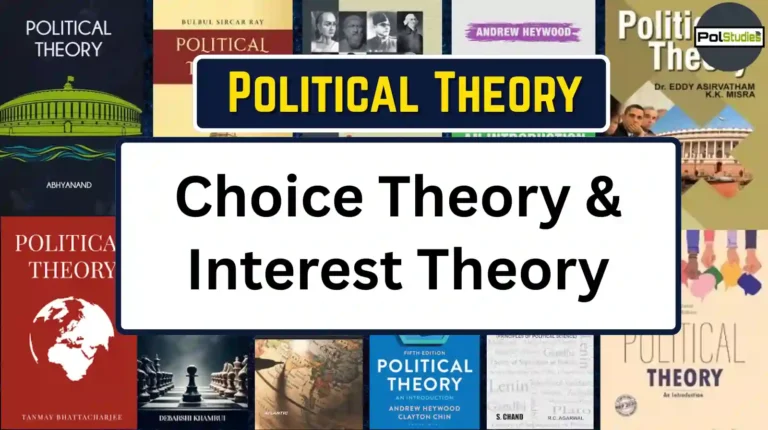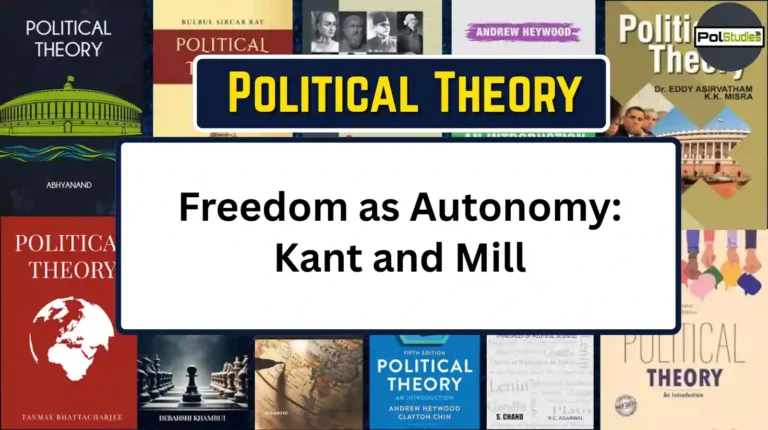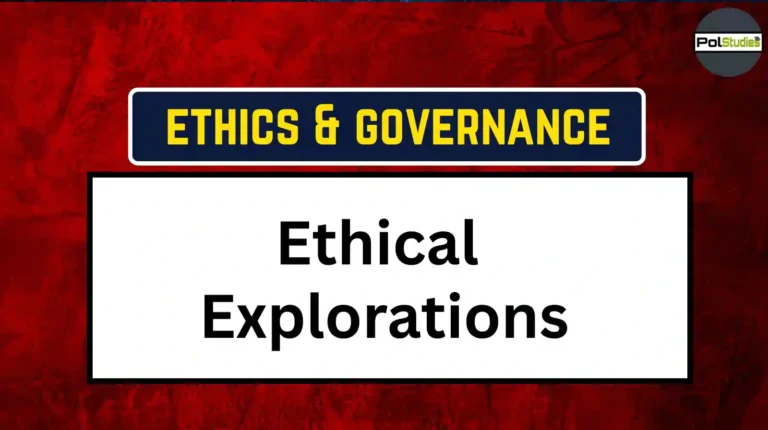Power: A Radical View | Steven Lukesh three-dimensional approach
Power : A Radical View
By:- Steven Lukesh
Introduction
Steven Lukesh in his book Power of Radical View describes the different stages of power. He takes a more political approach, a methodical theory with respect to power. With regard to power, Morton s. Baratz’s famous article “the two faces of power (1962)” and another article “power and poverty (1970)” are very important.
Stages of Power
Steven Lokesh has mainly presented a three-dimensional approach regarding power, which is as follows: –
The one-dimensional view
it is also called the pluralistic view of power. The main thinkers of this dimension are the following- Dahl, Polusby, Volkner
Dahl – his early “the concept of power” describes the simple idea of power. He writes that-
“A has such power that he can make B do anything he wants. Is B cannot refuse to do this work because he is in fear of power.
In short, as Polsby writes, pluralistic approaches attempt to study outcomes in a specific order. Researchers believe that Polsby should study actual behavior by reconstructing behavior or from documents, newspapers, or other appropriate sources.
Thus, according to Merelman, the pluralistic method studied the actual practice and emphasized operational definitions and it replaced the proof itself. In identifying power, observational behavior is taken into account, and pluralists are included as a central work in the study of decision-making.
Thus we see that pluralists focus their attention on actual or observable behavior in decision-making on important issues involving conflict. In short, it can be said that this “first dimension approach” focuses on behavior in decision-making. And those issues on which there is an observable conflict can be seen as policy priorities, that is, they are determined by political participation.
Two Dimensional View
In their critique of this approach, Baratz & Bachrach argue that it is restrictive and based on the fact that it gives a deceptively serious pluralistic picture of American politics. Power asserts that it has two faces-
First: that which is already perceived for which power is fully embodied and that it directly affects concrete decisions or activities. Their central point is that if a person or group, knowingly or unknowingly, creates or creates obstacles to the public transmission of policy, then that power or group has power.
Second: Power is in two different senses, on the one hand, successful control over b of all kinds in which he uses the common way in which a secures compliance over b. Power, on the other hand, means the security of compliance through the threat of sanctions.
The main point of Baratz & Bachrach’s pluralistic critique is to point out that a one-dimensional view of power is anti-behavioral. It claims to have placed great emphasis on the importance of early vetoing and decision-making. As a result of which no one takes into account of the fact that how much power can be.
Additionally, this two-pronged approach includes examining both decision-making and non-decision-making. A decision is a choice between alternative courses of action. A non-judgment is a decision that results in the suppression of an implicit or explicit challenge to the value or interests of the decision-maker.
Baratz & Bachrach have a broader concept of interests than the pluralists although it is a concept of subjective rather than objective sides. While pluralist considers the interests of all citizens to have policy preferences displayed by behavior that is considered within the political system.
Baratz & Bachrach also consider the preferences demonstrated by the behavior of those who have been partially or completely excluded from political judgment, such as crime or trial complaints.
Here in both cases the interests are consciously expressed and observed. In short, the two-dimensional view of power includes criticisms of the one-dimensional view of power worthy of practical attention. And it allows consideration of the ways in which an observable conflict of interest prevents decision-making on potential issues.
Three-Dimensional View.
no doubt represents a major advance over the two-dimensional view of power and the one-dimensional view of power is involved in the analysis of power relations and the potential issues of political agenda and the question of control are kept out of the political process.
can look at the tridimensional view of power in three
first count
is very important in its criticism of behaviorism to put it in another way it is still committed to behaviorism which is the study of implicit actual behavior that is observed in conflict situations. Seen as a model of sound judgment.
Baratz & Bachrach follow the pluralists in their individualistic view of the power of many, in that both sides follow in the footsteps of Max Weber. There are actually two different cases here. First is the phenomenon of collective action where policy or collective action is the case.
For example – one class or an institution, political party, or industrial corporation, the other – where there was a phenomenon of systemic or organizational influence.
second count
is the insufficient correlation of power with the actual observable conflict in the two-pronged approach. There are also pluralist critics in this regard but there is no necessary struggle for power for at least two
reasons- first- on their analysis of Baratz & Bachrach two types of power cannot include such struggle i.e. Manipulation or Authority
second – It is realistic and observational it will not emphasize the conflict.
third count
the two-pronged approach of the inadequacy of power is closely linked to each other, i.e., non-decision-making power exists only where grievances that are issues are denied entry into the political process. In essence, the three-dimensional approach incorporates a critique of the practical focus of the first two dimensions.
Features of all the three dimensions
(A) One-Dimensional Approach
- Behavioral
- Decision Making
- Key Issues
- Observable Conflicts
- Individual Interests are seen as Policy Priorities
(B) two Dimensional Approach of Power
- Decision-making and non-decision making
- issues and potential issues
- Observations (direct and latent) Conflicts
- Individual interests are seen as policy priorities Grievances
(C) Tridimensional view of power
- Decision-making and control over political agenda
- Issues and potential issues
- Overview andLukesh
The underlying concept of power
mainly explains two basic concepts here:- The first concept which Talcott Parsons, and the second concept is explained by Hannah Arendt.
The first concept of power is
explained mainly by Talcott Parson’s. He says that power should be treated as a specific mechanism operating to change the actions of other units individually or collectively in the processes of social interaction.
The person’s conceptualization of power links it to the pursuit of authority, consensus, and collective goals, and separates conflict of interest from exclusively coercion and coercion. Thus power depends on the institutionalization of authority.
The second concept of power has been
explained by Hannah Argent, according to which human capacity is not only related to work but also to coordination in work. Power is never the property of an individual, it belongs to a group and it exists only as long as the group stays together. When we say that someone is in power, we actually prepare a certain number of people to act in his name.
Hannah Arendt’s concept of power is related to a tradition and vocabulary that traces it back to Athens and Rome, according to which a republic is based on the rule of law and rests on the power of the people. In this context, the business of power dominance and command is different from obedience. Apart from this, two arguments are given in the context of power –
- violence can destroy power,
- power and violence are opposite to each other,
that is, these concepts of power are rationally defensible, and they give two reasons for this.
The first reason: it is a revisionist motivational iteration of power, ie one that is consistent with the central meaning of power as power is traditionally understood and with concerns that power students have always focused on. Thus, power refers to the ability, convenience, and ability and not to relations.
Reason two: Parsons appeals to see the analogy and power of debt creation in the economy as a zero-eligible phenomenon. He argues that the use of power as a form of power when justified by the rule of its ruler can achieve the ends that all desire and from which all benefit.

This picture essentially analyzes the contradictory and particular concepts and positions of power that underlie one, two, and three-dimensional views of power. As Steven, Lukesh says I don’t claim that it would necessarily be acceptable to propose all of those related ideas. One of the reasons for this is that these doubts have been developed from the ideas of the three-dimensional approach and that which is included in it is therefore moving forward in comparison to the other two dimensions.
Difficulties
Here are the three types of difficulties in the context of power as described by Lukesh in his article:-
Inaction:- Inaction should not be a non-event Failure to act in a certain way in a certain situation A good could be a specific outcome ie where acting in that way is a hypothesized possibility with prescribed consequences. Moreover, the result of inaction may well be another non-event such as- the non-appearance of the political issue where the actions take place and the question would have arisen due to the presence of pre-conceived notions.
Irresponsibility:- The second difficulty is that of irresponsibility in which the question arises as to how the power can be used without the user of the power. That is, one who uses चटेय does not know what he is doing. Here three elements of conscientiousness come into play-
- He may be unaware of the real purpose or meaning
- He may be unaware of how others interpret the
- act He may be unaware of the consequence of the act
Collective power Uses:- The third difficulty is with the collective use of power such as a group, class, or institution, the problem is how and where to use power when social causes are portrayed as the use of power. Can’t find out.







